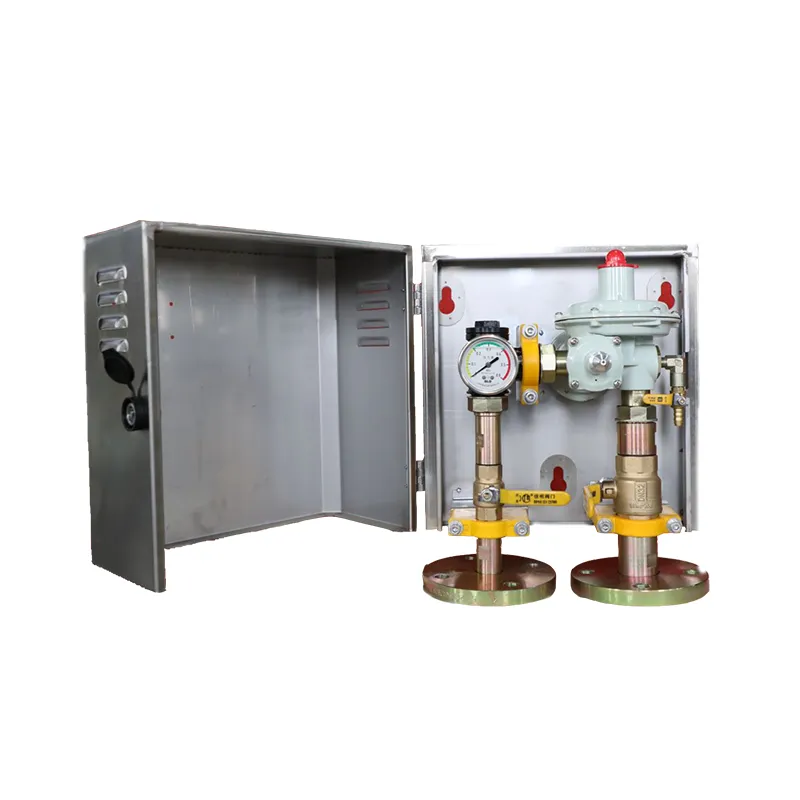
Dec . 20, 2024 11:40
Back to list
صمام تنظيم الضغط
Understanding Pressure Regulating Valves
Pressure regulating valves (PRVs) are crucial components in various fluid systems. They are designed to maintain a specific downstream pressure regardless of the fluctuations in upstream pressure. This function is essential in protecting equipment, ensuring efficient operation, and maintaining safety levels in a wide range of industries, including water supply, gas distribution, and various manufacturing processes.
The Working Principle
A pressure regulating valve operates on a relatively simple principle. It utilizes a diaphragm or piston that reacts to changes in downstream pressure. When the downstream pressure rises above a predetermined set point, the valve detects this change and adjusts its position to throttle the flow of fluid until the pressure drops back to the desired level. Conversely, if the downstream pressure falls below this threshold, the valve opens to allow more flow, thus stabilizing the pressure.
These valves can be designed to work with gases, liquids, or steam, making them versatile for different applications. The designs vary from simple mechanical types to more complex electronic controlled systems that can offer advanced features such as remote monitoring and control capabilities.
Key Applications
1. Water Supply Systems In municipal water distribution systems, PRVs are employed to regulate the pressure and protect pipelines from bursts due to excessive pressure. This also ensures that consumers receive a consistent water pressure in their homes.
2. Industrial Applications In factories, maintaining the right pressure is critical for processes that rely on pneumatic systems or require specific pressure levels for chemical reactions. PRVs help ensure the operational efficiency and safety of these processes.
3. Gas Distribution In natural gas pipelines, PRVs prevent pressure surges that could lead to leaks or explosions. They are paramount in ensuring the safe delivery of gas to consumers.
.
Benefits of Using Pressure Regulating Valves
صمام تنظيم الضغط

- Protection of Equipment By maintaining a steady downstream pressure, PRVs protect valves, pumps, and other equipment from damage caused by pressure fluctuations. - Operational Efficiency Efficient pressure management helps optimize the performance of systems, leading to energy savings and prolonged equipment life.
- Safety By controlling pressure within safe limits, PRVs play a critical role in preventing accidents and ensuring the safety of both personnel and equipment.
- Flexibility Many modern PRVs come with adjustable settings or can be integrated with electronic control systems, providing flexibility to adapt to changing operational requirements.
Types of Pressure Regulating Valves
- Spring-Loaded Valves These are the most common type where a spring mechanism opposes the force of the fluid pressure, allowing for a simple and reliable design.
- Diaphragm Valves These use a flexible diaphragm to sense pressure changes, providing smooth control and reduced pressure spikes.
- Pilot-Operated Valves For larger systems, these valves use a secondary pilot valve to control the main valve, offering enhanced precision and control.
- Electronic Pressure Regulators These advanced systems utilize sensors and electronic control mechanisms to continuously monitor and adjust pressure, often providing real-time data and analytics.
Conclusion
Pressure regulating valves are integral to modern fluid systems, providing stability, efficiency, and safety across various applications. As industries continue to advance, the need for reliable pressure management solutions will only increase. Whether in water supply, gas distribution, or industrial processes, understanding the operation and benefits of PRVs is essential for anyone working in fields that rely on fluid systems. By choosing the right type of pressure regulating valve and properly maintaining it, organizations can ensure optimal performance and minimize risks associated with pressure fluctuations.
Latest news
-
Safety Valve Spring-Loaded Design Overpressure ProtectionNewsJul.25,2025
-
Precision Voltage Regulator AC5 Accuracy Grade PerformanceNewsJul.25,2025
-
Natural Gas Pressure Regulating Skid Industrial Pipeline ApplicationsNewsJul.25,2025
-
Natural Gas Filter Stainless Steel Mesh Element DesignNewsJul.25,2025
-
Gas Pressure Regulator Valve Direct-Acting Spring-Loaded DesignNewsJul.25,2025
-
Decompression Equipment Multi-Stage Heat Exchange System DesignNewsJul.25,2025

